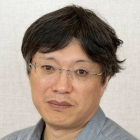You are here
Modulation of both intrinsic and extrinsic factors additively promotes rewiring of corticospinal circuits after spinal cord injury
Abstract
Axon regeneration after spinal cord injury (SCI) is limited by both a decreased intrinsic ability of neurons to grow axons and the growth-hindering effects of extrinsic inhibitory molecules expressed around the lesion. Deletion of phosphatase and tensin homolog (Pten) augments mTOR signaling and enhances the intrinsic regenerative response of injured corticospinal neurons after SCI. Due to the variety of growth-restrictive extrinsic molecules, it remains unclear how inhibition of conserved inhibitory signaling elements would affect axon regeneration and rewiring after SCI. Moreover, it remains unknown how a combinatorial approach to modulate both extrinsic and intrinsic mechanisms can enhance regeneration and rewiring after SCI. In the present study, we deleted RhoA and RhoC, which encode small GTPases that mediate growth inhibition signals of a variety of extrinsic molecules, to remove global extrinsic pathways. RhoA/RhoC double deletion in mice suppressed retraction or dieback of corticospinal axons after SCI. In contrast, Pten deletion increased regrowth of corticospinal axons into the lesion core. Although deletion of both RhoA and Pten did not promote axon regrowth across the lesion or motor recovery, it additively promoted rewiring of corticospinal circuits connecting the cerebral cortex, spinal cord, and hindlimb muscles. Our genetic findings, therefore, reveal that a combinatorial approach to modulate both intrinsic and extrinsic factors can additively promote neural circuit rewiring after SCI.
SIGNIFICANCE STATEMENT
Spinal cord injury (SCI) often causes severe motor deficits due to damage to the corticospinal tract (CST), the major neural pathway for voluntary movements. Regeneration of CST axons is required to reconstruct motor circuits and restore functions; however, a lower intrinsic ability to grow axons and extrinsic inhibitory molecules severely limit axon regeneration in the central nervous system. Here, we investigated whether suppression of extrinsic inhibitory cues by genetic deletion of Rho as well as enhancement of the intrinsic pathway by deletion of Pten could enable axon regrowth and rewiring of the CST after SCI. We show that simultaneous elimination of extrinsic and intrinsic signaling pathways can additively promote axon sprouting and rewiring of the corticospinal circuits. Our data demonstrate a potential molecular approach to reconstruct motor pathways after SCI.

